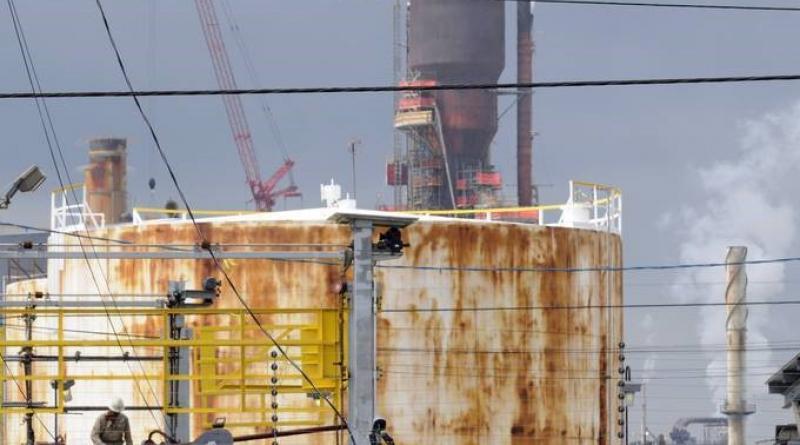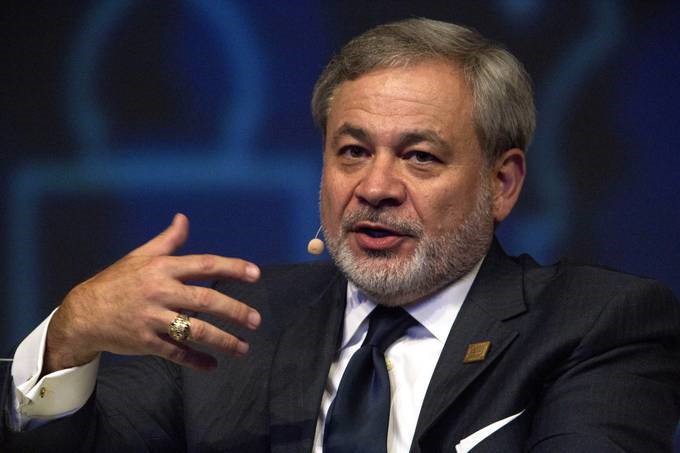Big Oil could end up even bigger by the end of the coronavirus pandemic

The nation’s biggest oil and gas companies could end up even bigger by the end of the coronavirus pandemic.
Analysts expect a coming wave of bankruptcies should the price of oil remain low. That could allow the largest petroleum industry players to scoop up more wells on the cheap – and leave them with more reserves after all the market tumult.
“The rich are going to get richer,” said John Kilduff, a partner with Again Capital, an oil-trading hedge fund. “The Exxons and Chevrons will pick up more assets.”
Nearly every oil company is hurting due to the pandemic. But the largest are best positioned to emerge stronger from the downturn.
The drop in people driving and flying during the viral outbreak has brought many already struggling oil companies to the brink of going belly up.
Small and midsize companies working mainly in the Permian Basin and other shale patches have been hit the hardest by the drop in prices. Getting shale oil out of the ground is generally more costly than tapping for other petroleum.
Even before the pandemic, the shale-oil sector saw lending dry up as banks and private investors lost confidence in those companies turning a profit. “They were already in trouble,” Kilduff said.
The oil giants, meanwhile, have wells around the world and the cash on hand to weather the turmoil.
As some small to midsize producers seeking Chapter 11 bankruptcy protection start to liquidate, oil giants may be able to buy their assets at bargain prices.
Already at least one giant, Chevron, says it is keeping an eye out for potential acquisitions.
“Certainly there are stresses on the various players in the industry today that could result in commercial opportunities, and we are alert to that,” chief executive Mike Wirth said at the company’s annual shareholders meeting held virtually due to the pandemic.
“If we see something that makes good sense for our shareholders,” he added, “we certainly will consider it.”

A handful of firms, including the Denver-based shale player Whiting Petroleum and the Houston-based ocean operator Diamond Offshore Drilling, have already filed for bankruptcy.
Others, such as hydraulic fracturing pioneer Chesapeake Energy in Oklahoma, are widely thought to be headed toward Chapter 11 protection, too.
Somewhere between 150 and 200 oil companies are expected to go bankrupt next year if the price of West Texas Intermediate, a U.S. oil benchmark, persists around $30 per barrel, according to the analytics firm Rystad Energy.
The oil industry saw consolidations during past price downturns.
Ebbs in the price of oil helped trigger waves of mergers and acquisitions during the mid-1980s and late 1990s as oil executives sought to reduce overhead costs.
It was around the turn of the millennium when Exxon and Mobil combined in 1999 to form what is today the largest U.S. oil company, ExxonMobil. Two years later, Chevron bought Texaco to eventually become the country’s second-largest petroleum producer.
This year, the price of oil cratered from around $61 at the start of 2020 to about $37 this week as demand for energy dried up. It briefly plummeted below $0 during the worst of the outbreak.
That precipitous drop, according to the management consulting firm McKinsey will result in the onshore oil sector to “consolidate very significantly.”
But the wild swings in prices could spook some buyers and sellers of wells and other assets from making deals until markets settle. “Volatility is bad for commerce in almost every context, including this one,” said Kevin Book, managing director at ClearView Energy Partners.
For now, those oil giants are not being spared short-term pain.
In their first earnings reports since the start of the pandemic, three of the four biggest U.S. oil and gas producers posted multimillion- to multibillion-dollar losses
The $610 million hit that ExxonMobil took during the first three months of 2020 was the company’s first quarterly loss in decades.
Both ExxonMobil and Chevron said they will pull back on capital spending this year — down to $23 billion and $14 billion, respectively — in response to the changing market conditions.
Even though the oil majors are in an austere mood, “when they see a good price, they’re going to take it,” Book said.
The Trump administration is trying to help oil companies of all sizes, but the biggest ones say they don’t need it.
The American Petroleum Institute, the most powerful oil lobbying group in Washington, says it is not asking the federal government for a bailout.
It has fought against unsuccessful efforts by some Republican senators senators to tariff foreign crude and by Texas regulators to impose production quotas. Either move would have helped prop up smaller, ailing domestic producers.
The Federal Reserve is preparing to offer a lending lifeline to businesses with up to either 15,000 employees or $5 billion in annual revenue — a program that may save some small to midsize oil companies.
Even so, “companies have to be creditworthy” to get the Fed-backed money, said Book — and many shale players are heavily indebted.
Despite the administration's efforts, President Trump’s top energy deputy acknowledges not every company is going to make it.

I think it’s fair to say that you’ll see some of those players go by the wayside,” Energy Secretary Dan Brouillette said in an online interview
last month. “They may be purchased by larger players in the marketplace, they may just simply close up shop and go by the wayside.”
“That’s the free market system,” he added. “It’s the way it works here in the United States.”
3 June 2020
The Washington Post





